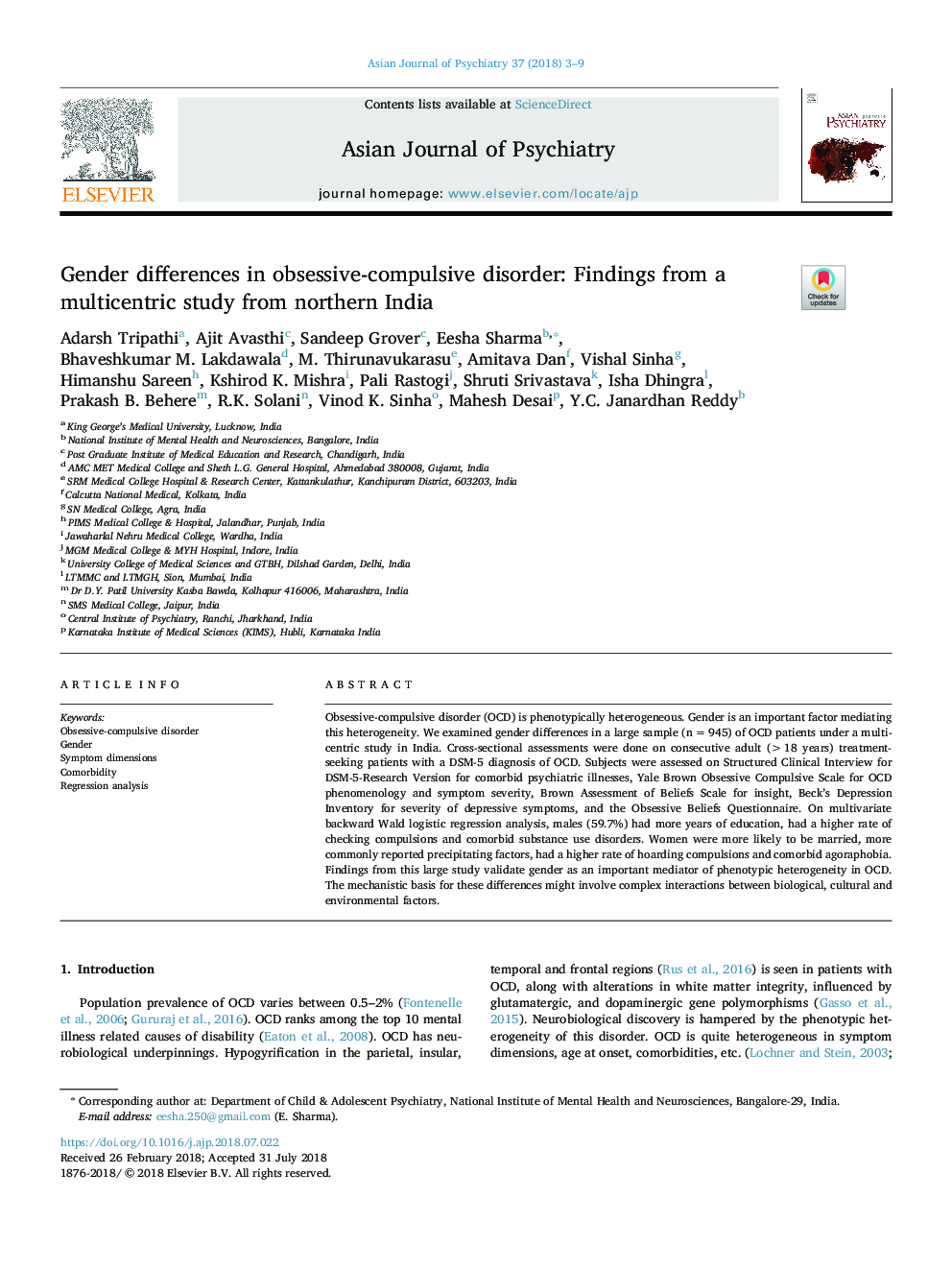| کد مقاله | کد نشریه | سال انتشار | مقاله انگلیسی | نسخه تمام متن |
|---|---|---|---|---|
| 6787222 | 1432566 | 2018 | 7 صفحه PDF | دانلود رایگان |
عنوان انگلیسی مقاله ISI
Gender differences in obsessive-compulsive disorder: Findings from a multicentric study from India
ترجمه فارسی عنوان
اختلافات جنسیتی در اختلال وسواسی-اجباری: یافته های یک مطالعه چند گانه ای از هند
دانلود مقاله + سفارش ترجمه
دانلود مقاله ISI انگلیسی
رایگان برای ایرانیان
کلمات کلیدی
اختلال وسواسی-اجباری، جنسیت، ابعاد نشانه، همبودی، وجود همزمان دو بیماری، تجزیه و تحلیل رگرسیون،
موضوعات مرتبط
علوم زیستی و بیوفناوری
علم عصب شناسی
علوم اعصاب (عمومی)
چکیده انگلیسی
Obsessive-compulsive disorder (OCD) is phenotypically heterogeneous. Gender is an important factor mediating this heterogeneity. We examined gender differences in a large sample (nâ=â945) of OCD patients under a multi-centric study in India. Cross-sectional assessments were done on consecutive adult (>18 years) treatment-seeking patients with a DSM-5 diagnosis of OCD. Subjects were assessed on Structured Clinical Interview for DSM-5-Research Version for comorbid psychiatric illnesses, Yale Brown Obsessive Compulsive Scale for OCD phenomenology and symptom severity, Brown Assessment of Beliefs Scale for insight, Beck's Depression Inventory for severity of depressive symptoms, and the Obsessive Beliefs Questionnaire. On multivariate backward Wald logistic regression analysis, males (59.7%) had more years of education, had a higher rate of checking compulsions and comorbid substance use disorders. Women were more likely to be married, more commonly reported precipitating factors, had a higher rate of hoarding compulsions and comorbid agoraphobia. Findings from this large study validate gender as an important mediator of phenotypic heterogeneity in OCD. The mechanistic basis for these differences might involve complex interactions between biological, cultural and environmental factors.
ناشر
Database: Elsevier - ScienceDirect (ساینس دایرکت)
Journal: Asian Journal of Psychiatry - Volume 37, October 2018, Pages 3-9
Journal: Asian Journal of Psychiatry - Volume 37, October 2018, Pages 3-9
نویسندگان
Adarsh Tripathi, Ajit Avasthi, Sandeep Grover, Eesha Sharma, Bhaveshkumar M. Lakdawala, M. Thirunavukarasu, Amitava Dan, Vishal Sinha, Himanshu Sareen, Kshirod K. Mishra, Pali Rastogi, Shruti Srivastava, Isha Dhingra, Prakash B. Behere, R.K. Solanki,
